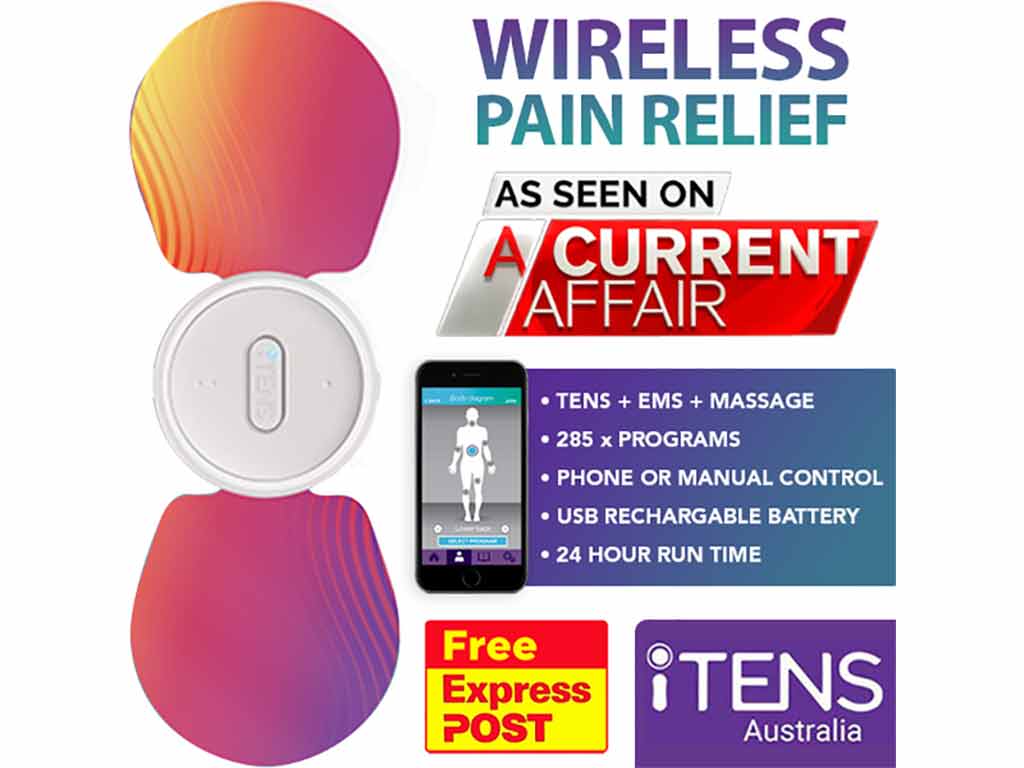
An Electrical Muscle Stimulation machine (or EMS machine) utilises a high-frequency range to contract and relax the muscles. It also has lower frequency ranges that promote muscle relaxation and blood circulation. This machine is beneficial for muscle injuries, muscle atrophy, and even for massage purposes. It is essential to consult a medical professional for guidance. Additionally, make sure to clean and dry the skin before placing electrodes. Moreover, start with low settings to ensure safety and effectiveness.
Muscle injury, whether from strains, tears, or trauma, often leads to pain, inflammation, and reduced function. Similarly, muscle atrophy, resulting from disuse, injury, or medical conditions, can lead to weakness and loss of muscle mass. EMS can aid both scenarios by providing targeted electrical impulses to stimulate muscle contractions. This article will present more about EMS devices, including their mechanism of action, uses, and safety considerations.
How EMS Machines Work
EMS machines work by using electrical currents in a high-frequency range to contract and relax the muscles. These electric currents mimic the signals that the brain sends to the muscles during voluntary movements, causing contractions. Thus, this helps build muscle strength without straining the body, making it beneficial for muscle performance and recovery.
The frequency span ranges from 50-400 Hz. 80-120 Hz is ideal for inducing muscle contractions for strengthening. Lower frequency ranges promote muscle relaxation and blood circulation. However, it is necessary to consult a physical therapist before use. They can determine the appropriate electrical stimulation setting for individual needs, such as workouts or muscle recovery from injury.
Starting at the lowest setting and gradually increasing to prevent shocks is vital when using the machine unit. It is also essential to avoid setting the frequency and intensity higher than what is tolerated. Moreover, the user should limit each session to 20 minutes. Prolonged usage can lead to fatigue and overstimulation of the muscles due to the strong currents. In summary, regular use of the device can improve muscle strength, prevent atrophy, and regain flexibility.
Benefits
- Non-invasive and drug-free: EMS sessions eliminate the need for any injections, invasive operations, or the use of medications.
- Time-saving: traditional workouts often require a significant time commitment. With EMS, people can target specific muscles to reduce warm-up time while improving training performance.
- Customisable: it provides modifiable settings and programs to cater to different needs and conditions.
- Portable: most EMS are compact and lightweight, making them easy to carry and use anywhere. Thus, it allows people to incorporate the stimulation into their daily routine conveniently.
- Versatile: it can provide various effects, such as muscle toning, strengthening, rehabilitation, and relaxation.

Applications of EMS Machines
EMS machines are often used in physical therapy and rehabilitation settings. These devices aid patients recovering from sports injuries or undergoing rehabilitation from other health conditions. In addition, they help improve muscle tone and increase range of motion. Using adhesive electrodes placed on the skin allows for targeted muscle stimulation, aiding in the recovery process.
Moreover, EMS devices are beneficial in preventing muscle atrophy. This is particularly true for individuals who may be unable to engage in physical activities due to injury or illness. The machine can help maintain muscle strength and prevent muscle wasting during periods of inactivity.
Furthermore, EMS units can use electrical stimulation to reduce muscle tension and provide effects similar to massage therapy. The electrical muscle stimulation helps relax tight muscles. Athletes can benefit from this technology in their recovery process. They may also incorporate it into their athletic training regimen. Overall, EMS devices offer various applications in physical therapy, assisting in muscle function and strength recovery and maintenance.
Does EMS Have Potential Side Effects?
Potential side effects may occur after using EMS devices, although they are rare. For instance, using excessively high frequency and intensity levels during the session may cause skin irritation. They may induce redness, itching, or a burning sensation. Moreover, the material in the surface electrodes may cause allergic reactions in some individuals.
Another potential side effect is muscle fatigue. Using the device at too high of an intensity level or too long can lead to muscle fatigue. This can result in soreness, weakness, or even muscle damage. Users should start at a low-intensity level and slowly increase it as needed.

Safety Considerations When Using an EMS Machine
Safety is a vital aspect when learning how to use an EMS machine. Firstly, consult a medical professional to determine if EMS is suitable for the condition to use. A healthcare provider can also advise the correct settings to use. Secondly, ensure the skin is clean and dry before putting the electrodes. Do not place the pads on open wounds or broken skin.
Thirdly, avoiding sensitive areas like the head, eyes, throat, spine, and near varicose veins is vital. The electrical stimulation in these locations may worsen the condition or cause complications. Additionally, it is advisable to start with the lowest settings and gradually increase them as necessary. This allows for a more comfortable and controlled experience.
Fourthly, do not use the device while bathing, sleeping, and driving. Since EMS is an electrical device, exposing the unit to water causes shocks. Lastly, avoid using the EMS units near an electrical-implanted device like a cardiac pacemaker or defibrillator. The electric currents from EMS may interfere with the functioning of these implanted machines.
When to See a Doctor?
People should be aware of signs that indicate the need to consult a healthcare professional when using an EMS device. For instance, experiencing severe or increasing pain during the use of the device necessitates the user to seek medical attention as it could indicate an underlying issue.
Additionally, signs of unusual or adverse reactions to the electrical stimulation are a reason to consult a doctor. The symptoms are skin irritation, burning sensation, or excessive redness. These could be signs of an allergic reaction or other health concerns that require medical evaluation and treatment. Always prioritise health and seek medical guidance when there are concerns.
Conclusion
In conclusion, Electrical Muscle Stimulation Machines (EMS machines) operate by sending electrical currents to contract and relax muscles, mimicking natural brain signals. They are valuable in physical therapy for injury recovery, muscle tone improvement, and preventing atrophy. Starting at a low setting and gradually increasing is crucial to prevent shocks, and sessions should not exceed 20 minutes. Regular use can enhance muscle strength, flexibility, and overall well-being. EMS devices offer versatile applications in rehabilitation and athletic training, aiding muscle recovery and maintenance.
Safety is paramount when using an EMS device. Consulting a medical professional for guidance on suitability and proper usage is crucial. Users should prioritise skin cleanliness, avoid sensitive areas, and start with low settings. Moreover, never use the device in water or near implanted medical devices. Seeking prompt medical attention is advisable when experiencing severe pain or unusual reactions. Prioritising health and seeking guidance ensures safe and effective use of EMS devices.







